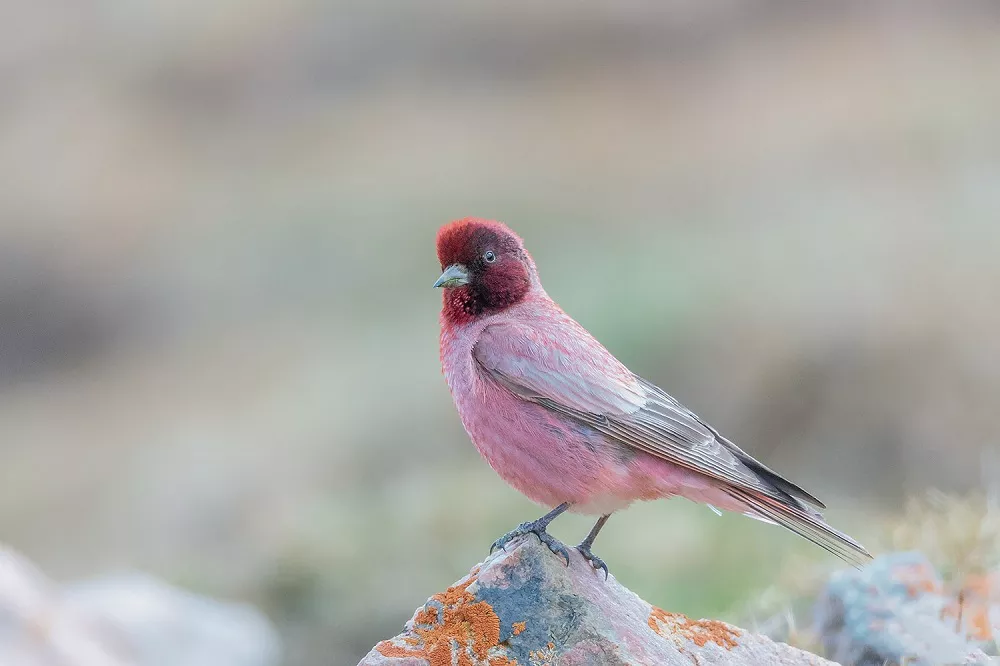The Tibetan Rosefinch (Carpodacus roborowskii) is a small, brightly colored bird found in the high-altitude regions of Tibet, China, and Nepal. These birds have a unique diet that allows them to survive in the harsh, alpine environments in which they live.
Tibetan Rosefinches primarily feed on seeds, insects, and berries. During the summer months, they will feed on a variety of insects, including beetles, caterpillars, and grasshoppers. They will also consume the larvae of moths and butterflies.
As the weather turns colder, the Tibetan Rosefinch switches to a diet of seeds and berries. They are known to feed on the seeds of grasses and other small plants, as well as the berries of shrubs and trees. They have been observed feeding on the seeds of various species of wildflowers, including alpine gentians and cinquefoils.
Interestingly, Tibetan Rosefinches have a unique adaptation that allows them to digest the tough seeds and husks of their food. They have a muscular stomach that allows them to grind up their food, breaking down the tough seed coats and extracting the nutrients they need to survive. This adaptation is critical in the high-altitude regions where these birds live, where food can be scarce and the environment is harsh.
In addition to their diet, the Tibetan Rosefinch has other adaptations that allow them to survive in the harsh environments in which they live. They have thick feathers and a layer of insulating down that helps to keep them warm in the cold, alpine temperatures. They also have a unique circulatory system that allows them to extract oxygen from the thin air at high altitudes.
In conclusion, the Tibetan Rosefinch is a fascinating bird with a unique and adaptable diet. These birds primarily feed on seeds, insects, and berries, and have a muscular stomach that allows them to digest the tough seeds and husks of their food. They are well adapted to life in the harsh, alpine environments of Tibet, China, and Nepal, with a range of physical and physiological adaptations that allow them to survive in these challenging habitats.


 Facebook
Facebook  Instagram
Instagram  Youtube
Youtube 